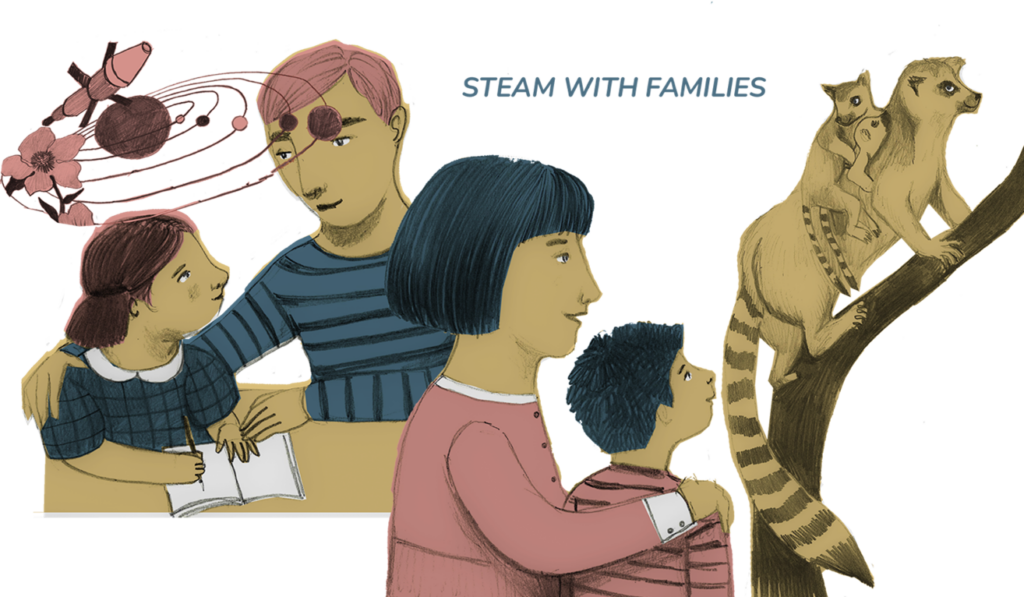While schools play a central role in introducing students to STEM subjects, parents are increasingly recognized as key contributors to their children’s STEM education at home. This role has become even more significant with the rise of remote learning, technological advancements, and the growing emphasis on critical thinking skills. By actively engaging in their children’s STEM learning, parents can cultivate curiosity, foster problem-solving skills, and lay a strong foundation for future success.

The first step in teaching STEM at home begins with sparking curiosity and encouraging exploration. Children are natural learners, often brimming with questions about the world around them. Parents, by nurturing this innate curiosity, can create an environment where STEM learning flourishes. Everyday life is filled with opportunities to teach STEM concepts. Whether it’s cooking in the kitchen (Box Science in the Kitchen), gardening (Boxes Geometry of flowers or Growing moss), or fixing household appliances, parents can encourage their children to ask questions, observe, and explore. For example, baking can introduce basic chemistry concepts like reactions between ingredients, while building a treehouse can expose children to engineering principles.
Parents can play a pivotal role by encouraging children to ask “why” and “how” questions. When children inquire about the world, parents should avoid giving simple answers and instead guide them through the process of discovery. For instance, if a child asks why the sky is blue (Box How we see?), parents can explain light refraction in a simple way, or even encourage the child to research further. This fosters a mindset of curiosity and the habit of finding evidence-based answers.


Providing access to books, puzzles, games, and simple scientific tools like magnifying glasses, rulers, or building blocks helps children experiment with STEM concepts in a playful manner. Digital tools, such as apps, coding platforms, and virtual labs, can also support STEM learning, enabling children to interact with concepts like programming, geometry, and physics in an engaging and interactive way. Parents can integrate STEM learning into daily life by incorporating educational activities that stimulate problem-solving and critical thinking. For younger children, building with LEGO bricks or using a microscope to observe everyday objects can introduce basic engineering and biology. For older children, engaging in DIY projects like creating a model volcano or designing a small robot using kits can cultivate a hands-on understanding of more complex scientific concepts. (Boxes Be my robot or How magnets work).


Presenting children with real-world challenges or asking them to come up with solutions to everyday problems encourages creative problem-solving. Parents can ask their children questions like, “How can we reduce the amount of water we use at home?” or “What would you invent to help clean the environment?” (Boxes Clean the ocean or States of Water).
These open-ended questions foster innovation and encourage children to think about how STEM solutions apply to pressing global issues.
Parents can introduce their children to the myriad possibilities in STEM fields by discussing different careers that involve science, technology, engineering, and math. A trip to the doctor’s office can open a conversation about medical careers while watching a nature documentary can lead to discussions about environmental science or conservation efforts. Parents can explain how STEM careers shape the world and encourage their children to explore fields they find interesting. Field trips to science museums, zoos, or tech expos can provide children with hands-on experience and a sense of the real-world application of STEM concepts. These visits can spark excitement, stimulate curiosity, and provide further opportunities for parents to reinforce learning.
While parents can provide foundational STEM learning at home, collaboration with schools and teachers is critical to ensure a holistic education. Engaging with educators helps parents stay informed about their children’s progress in STEM subjects and identify areas where extra support may be needed. Parents can reinforce what their children are learning in school by helping with homework, discussing class projects, and engaging in activities that align with the school’s STEM curriculum. Reviewing lessons and encouraging children to explain what they’ve learned can help solidify concepts. Many schools and communities offer science fairs, coding competitions, and engineering clubs. Parents can encourage their children to participate in these activities, providing both emotional and logistical support. By attending these events, parents also demonstrate the value they place on STEM education, which can motivate children to invest time and effort in their studies.
STEM education is not confined to classrooms; it can flourish in homes where children are encouraged to explore, experiment, and think critically about the world around them. As parents continue to engage in their children’s STEM learning, they are not only preparing them for future academic success but also nurturing the problem solvers and innovators of tomorrow.
